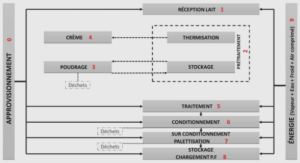Curry Plant (Helichrysum sp.) Oils
UMR CNRS 5623, Université Paul-Sabatier, Laboratoire des Interactions Moléculaires et Réactivité Chimique et Photochimique, Faculté de Pharmacie de Toulouse, Toulouse, France; Nat’Ex Biotech, Toulouse, France; Madagascar’s flora is one of the richest in the world and has many medicinal and aromatic plants. The essential oils that are extracted are products with high added value that could contribute to economic island development. Among these aromatic and medicinal plants, we will focus on the genus Helichrysum. Varietal differences occur worldwide, with more than 600 species (Bigovic et al., 2010).The genus Helichrysum (from the Greek helios, meaning sun, and chrysos, meaning gold) belongs to the Asteraceae family which incudes many species rich in essential oils and aromatic compounds. The Asteraceae family, also known as the Com- positae family, includes 1600–1700 genera and 24,000–30,000 species (Funk et al., 2005). All species are well distinguished by the arrangement of the florets and the fruit. Plants belonging to this family may appear on different forms, as it includes herbs, succulents, lianas, epiphytes, trees, or shrubs. They are located everywhere, except Antarctica (Funk et al., 2005).
The uses of several members of the Asteraceae family are in medicine, as ornaments, and for trade. Among species we can cite those of commercial impact as the food crops Lactuca sativa (lettuce), Cichorium intybus (chicory), Cynarascoly- mus (globe artichoke), Smallanthus sonchifolius (yacon), and Helianthus tuberosus (Jerusalem artichoke).Several researchers have focused on the chemical composition of the essential oil of some species belonging to this family. These volatile compounds may be applied in edible, medicinal, and herbal plants which make them safe when used in food products. Essential oils and their constituents have been largely employed as flavoring agents in foods and much of them exhibited a large antimicrobial activity (Alzoreky and Nakahara, 2002).
Raala et al. (2011) studied the content and composition of the essential oils of five Asteraceae species from Estonia, namely Chamomilla recutita, Chamomilla suaveolens, Matricaria perforate, Anthemistinctoria, and Leucanthemum vul- gare. The oil yields ranged from trace amounts up to 0.2%. The chemical composition was established using gas chro- matography (GC)–flame ionization detector and GC–mass spectrometry (MS) methods. The identified compounds varied significantly from one species to another. The main constituents of the essential oils of the studied Asteraceae species were as follows: C. recutita: bisabolol oxide A (39.4%), bisabolone oxide A (13.9%), (Z)-En-yne-dicycloether (11.5%), bisabo-lol oxide B (9.9%), α-bisabolol (5.6%), and chamazulene (4.7%); C. suaveolens: (Z)-En-yne-dicycloether (37.2%), gera- nylisovalerate (22.9%), (E)-β-farnesene (15.6%); Anthemistinctoria: α-eudesmol (10.2%), γ-cadinol (8.7%), γ-cadinene (4.0%); M. perforata: (Z,Z)-matricaria ester (77.9%), (E)-β-farnesene (3.5%), matricaria ester isomer (3.5%), and mat- ricaria lactone (3.0%); and L. vulgare: (E)-β-farnesene (7.3%), hexadecahydrocyclobuta[1,2:3,4]dicyclooctene (5.3%), The genus Helichrysum (Asteraceae family) is abundantly prevalent throughout the world (Europe, Africa, Australia, North America) and is represented by more than 600 species. One hundred and fifteen of them are located in Madagascar; most are endemic, and some are used in folk medicine. Essential oils and extracts are obtained from the whole plant or from several parts of the plant.
Usage and Applications
This chapter will study of essential oils of seven Malagasy species, namely Helichrysum bracteiferum (DC) H. Hum- bert, Helichrysum gymnocephalum (DC), H. Humbert, Helichrysum selaginifolium Vig. Humboldt, Helichrysum hypnoides (DC) Vig. Humboldt, Helichrysum cordifolium (DC), and Helichrysum faradifani Sc Ell. We will start with a botanical description of each one, then focus on the chemical composition of their essential oils. The botanical description and embranchment is summarized in Table 1. It is important to note that both species H. bracteiferum and H. gymnocephalum are often confused because of their great morphological similarity. They both share the same common name Rambia- zina, but they can be differentiated according to the size of their leaves. The first, with small leaves is classified as the male and called lahy, while the second, with broader leaves, is classified as the female and called vavy (Rasoanaivo and branches covered with dense brown tawny tomentum formed with small fine hairs. Leaves are sessile, attenuate at the base, and small (20–30 × 4–5 mm). Flowers are among two or three, all contained in flower heads, and are all homogamous. The fruits, called Achenes, are papillose (Humbert, 1962). This species is found in several places of Madagascar, particularly the siliceous rock in the middle of the ericoid vegetation peaks in the massif of Tsaratanana (North), the massif of Andran- govalo (East Lake Alaotra), or the massif of Ankaratra (south of Antananarivo).




